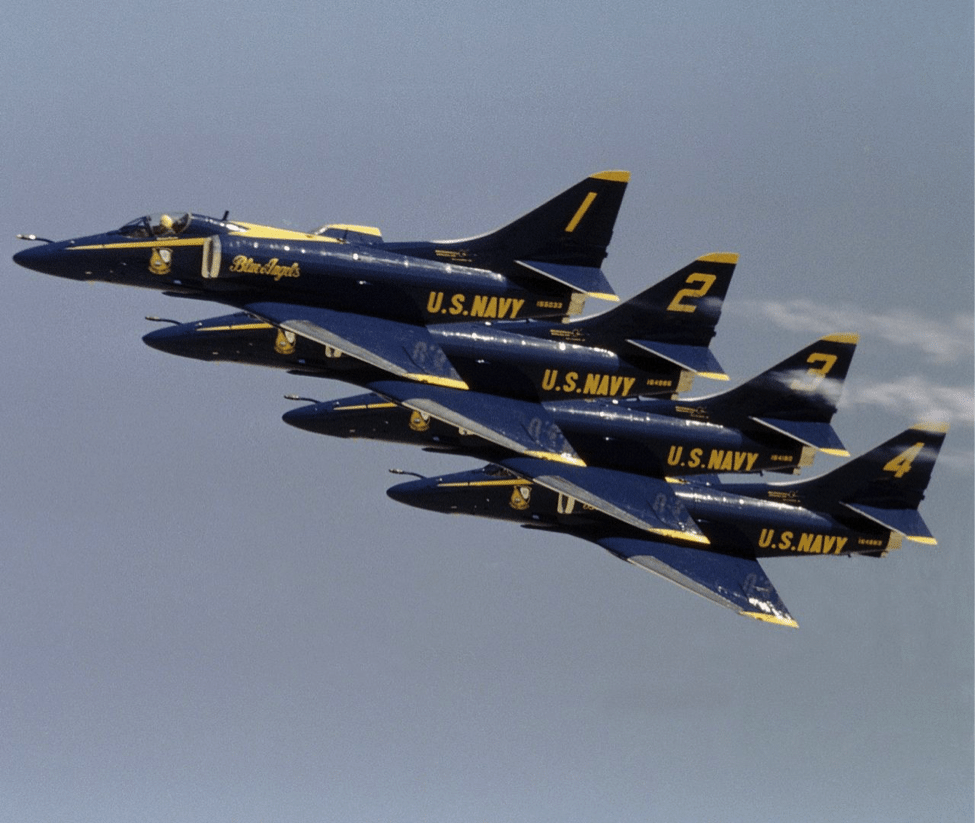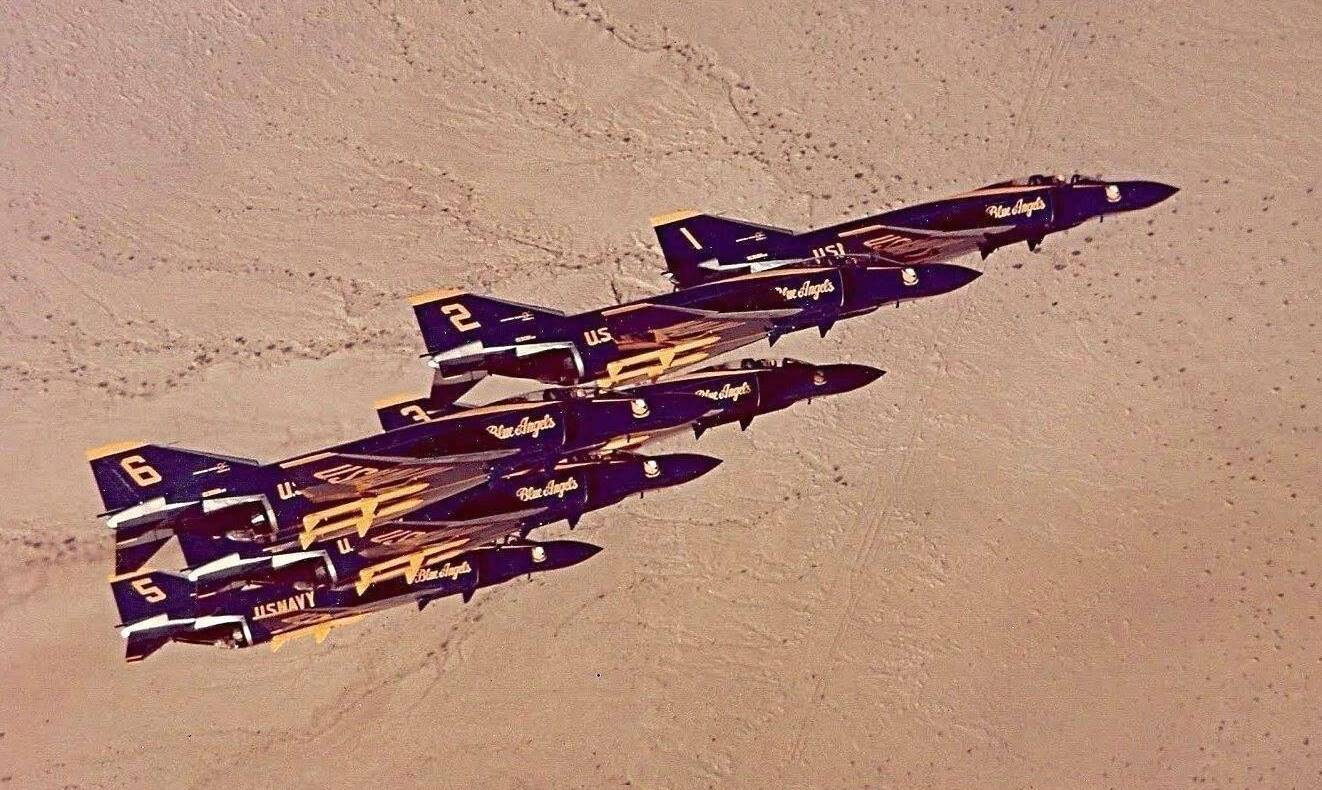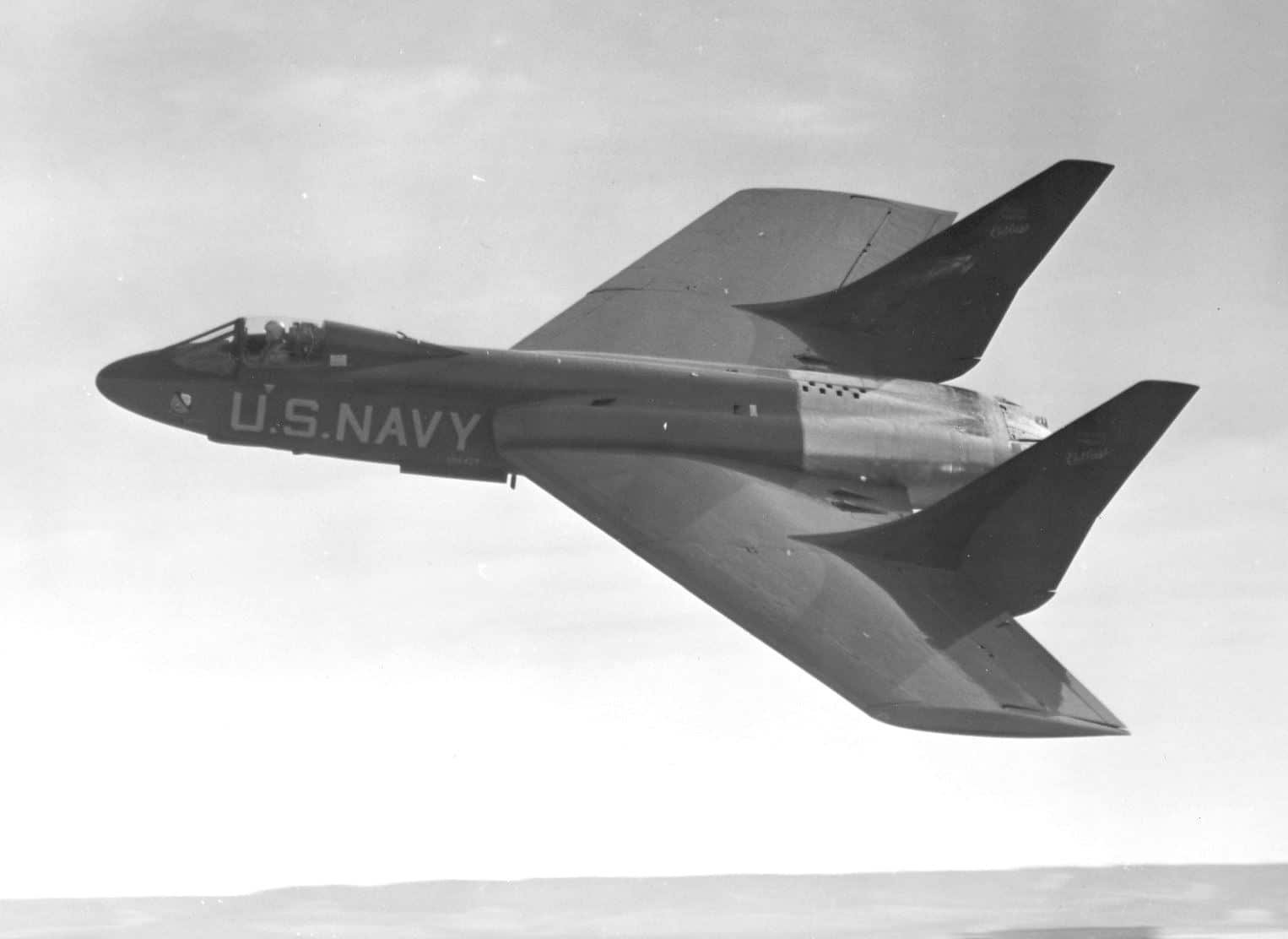The Blue Angels Have Flown the F/A-18 for More Than 30 years. What Else Have They Flown?
The Unites States Navy Flight Demonstration Team, otherwise known as the Blue Angels, usually begin their performance season at Naval Air Weapons Station China Lake in California. The Blue Angels have been flying McDonnell Douglas (Boeing) F/A-18 Hornets since the 1987 show season. For 70 years the Blues have been thrilling crowds with their precision aerobatic routines. For thirty of those years the performances have been flown in Hornets. What aircraft did the Blues use before they started flying the F/A-18?
[youtube id=”BEIQGSjJ55A” width=”800″ height=”454″ position=”left”]
The Blue Angels turned in their McDonnell Douglas F-4J Phantom IIs at the end of their 1973 show season. For 1974 and through the next 13 years the Blues would fly the ultra-maneuverable McDonnell Douglas A-4F Skyhawk. Weighing about one quarter the weight of an F-4J and with the uprated Pratt & Whitney J53-P408 engines, the A-4F was also considerably less expensive to fly and maintain than the F-4J.

The first Blue Angels show performed in the new Skyhawks took place in Omaha Nebraska on May 18th, 1974. The Blues were flying A-4Fs with modifications including inverted fuel system tweaks, pilot restraint systems, strengthened outboard aileron hinge fittings, VHF radios, drogue chutes, built-in folding ladders, smoke systems, and elevator fuel systems.

When the Blues Angels were formed by World War II ace Roy Marlin “Butch” Voris in 1946, they first flew the World War II-era Grumman F6F-5 Hellcat. From later in 1946 until 1949 the Blues flew the Grumman F8F-1 Bearcat. Next up was the first jet flown by the Blues, the Grumman F9F-2 / F9F-5 Panther. Beginning in 1954 the team performed in their first swept-wing jet, the Grumman F9F-8 Cougar. Following the Cougar was the team’s first supersonic jet, the Grumman F-11 Tiger. In 1969 the team began flying their first twin-engine jet, the McDonnell-Douglas F-4J Phantom II. Then came the Skyhawk, followed by the Hornet. Now the Blues fly the Boeing F/A-18E and F/A-18F Super Hornet.

Supporting aircraft flown by the Blues have included the Douglas R4D (C-47) Skytrain, the Curtiss R5C (C-46) Commando, the Douglas R5D (C-54) Skymaster, the Lockheed C-121 Super Constellation. Since 1970 the all-Marine Corps-manned Lockheed C-130 Hercules, affectionately known as Fat Albert, has supported the Blue Angels and also performed a warm-up routine for airshow crowds before the blue jets take center stage. The latest Fat Albert is a C-130J model- and the youngest aircraft on the roster.

Other aircraft flown by the Blue Angels have included a North American SNJ (T-6) Texan to simulate opposing enemy aircraft during the 1940s and a Lockheed TV-2 (T-33) Shooting Star used during the 1950s as a VIP transport. Perhaps the least likely of all Blues aircraft were two Vought F7U Cutlasses which were briefly intended to be used as demonstration aircraft while the team was flying F9F-5s.

How many different aircraft have you seen the Blue Angels fly? The author has seen them fly Tigers, Phantoms, Skyhawks, and Hornets. Comment on our page and share your experience!
